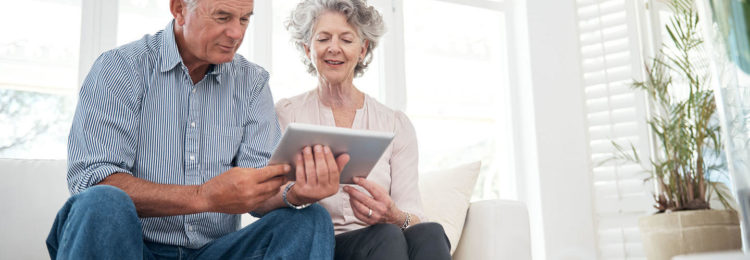3 Ways Technology is Transforming Florida Senior Living Communities
Florida welcomes more retirees every year than any other state in the US. And of the 20 million people who call Florida home, adults over the age of 65 account for more than 20 percent.
Senior living communities in the state already face a host of existing operational challenges, including hurricane readiness and state compliance. These will only become more difficult to manage as Florida’s senior population grows.
So what sets the senior living communities that are safe and compliant apart from the ones that don’t quite hit the mark? Technology.
Beyond emergency preparedness, having the right tech can be a deciding factor for older adults considering making the transition to a senior living community in the Sunshine State. Let’s take a look at how technology is already enhancing senior living in Florida – and how that technology will be a differentiator for future residents and their families.
Improve Hurricane Readiness with Power Plans & Family Communication
Hurricanes are dangerous for all Floridians, but particularly for senior living residents. The level at which many senior living communities are underprepared is staggering.
Consider how crucial it is for seniors in residential communities to have access to a backup generator during a storm: temperature regulation, medical equipment, and elevators all depend on power.
The state of Florida passed legislation in 2018 to mandate that all Florida senior living communities have a backup power plan that can be deployed during an emergency. However, when Hurricane Dorian bore down on the state last month, about one in 10 assisted living communities and nearly 60 percent of nursing homes still didn’t have the proper equipment.
One of Florida senior living’s main technology shortcomings, then, is hurricane preparedness. But operational equipment isn’t the only thing to be concerned about. How will residents communicate with loved ones during a hurricane or other emergency? How will they stay informed about emergency procedures?
This is where communication technology can tremendously improve residents’ safety and wellbeing during unexpected or hazardous situations.
If a community has a generator that can keep internet service running, residents will still be able to make use of communication technology. Many senior living communities in Florida and elsewhere now offer family engagement platforms. These enable loved ones to communicate with staff to keep everyone safe and informed. No busy telephone lines or panicked uncertainty – HIPAA-compliant electronic messaging allows for easy contact and peace of mind.
Smart speakers can also be helpful during times of emergency. Voice technology, like Amazon Alexa, is a great way to quickly provide all residents with important updates about the situation. Plus, residents won’t have to wait around for community-wide announcements – they can simply ask voice assistants for the information they need. In the event of a non-threatening storm, a voice assistant can update residents on the changing forecast.
Protect Resident Health Records and Maintain Compliance with EHRs and eMARs
Another critical part of keeping Florida senior residents safe during emergencies is protecting their health data.
Electronic Health Records (EHRs) and electronic Medical Administration Records (eMARs) are the best way to do this. These technologies improve day-to-day work for staff by streamlining care planning, but during an emergency, they ensure residents’ health and wellbeing if normal care is interrupted. And they both do so while complying with state and federal regulations.
EHRs significantly improve health record storage and access in senior living communities by housing all medical documentation online. Should a natural disaster threaten records that exist on paper, EHRs keep residents’ health data stored digitally and HIPAA-compliant.
Similarly, eMARs help sustain state compliance and secure resident safety. A digital platform that integrates EHR data with eMAR tasks means that if an emergency disrupts normal medication distribution staff can easily keep track of any missed medications following the storm, as the data will still be stored electronically.
Use Tech as a Differentiator for Prospective Senior Living Residents
As Florida continues to be one of the most popular destinations for retiring Americans, there will be competition among communities to attract new senior living residents. For many of those older adults, especially tech-savvy baby boomers, tech-forward senior living communities will stand out from the rest.
One of the ways technology can help senior living residents preserve autonomy and enjoy a healthy social life is through a community engagement platform. This technology can keep residents up-to-date on community announcements and events rather than hunting down activity boards or flyers, which makes it easier for them to attend the programming they’re excited about and connect with other residents.
And this communication technology doesn’t just help during emergencies. It also helps families stay involved during their loved one’s transition to senior living. The beauty of a family engagement platform is that family members can check in with staff any time they want to see how their loved one is doing and what they’ve been up to.
As senior living technology adoption becomes more common across the country, older adults will start to expect it. And in Florida, climate factors demand it – senior living residents in Florida need this kind of tech to live in the worsening climate.
If you’re interested in how your Florida senior living community might benefit from tech solutions, sign up for a demo.

Leave a Reply